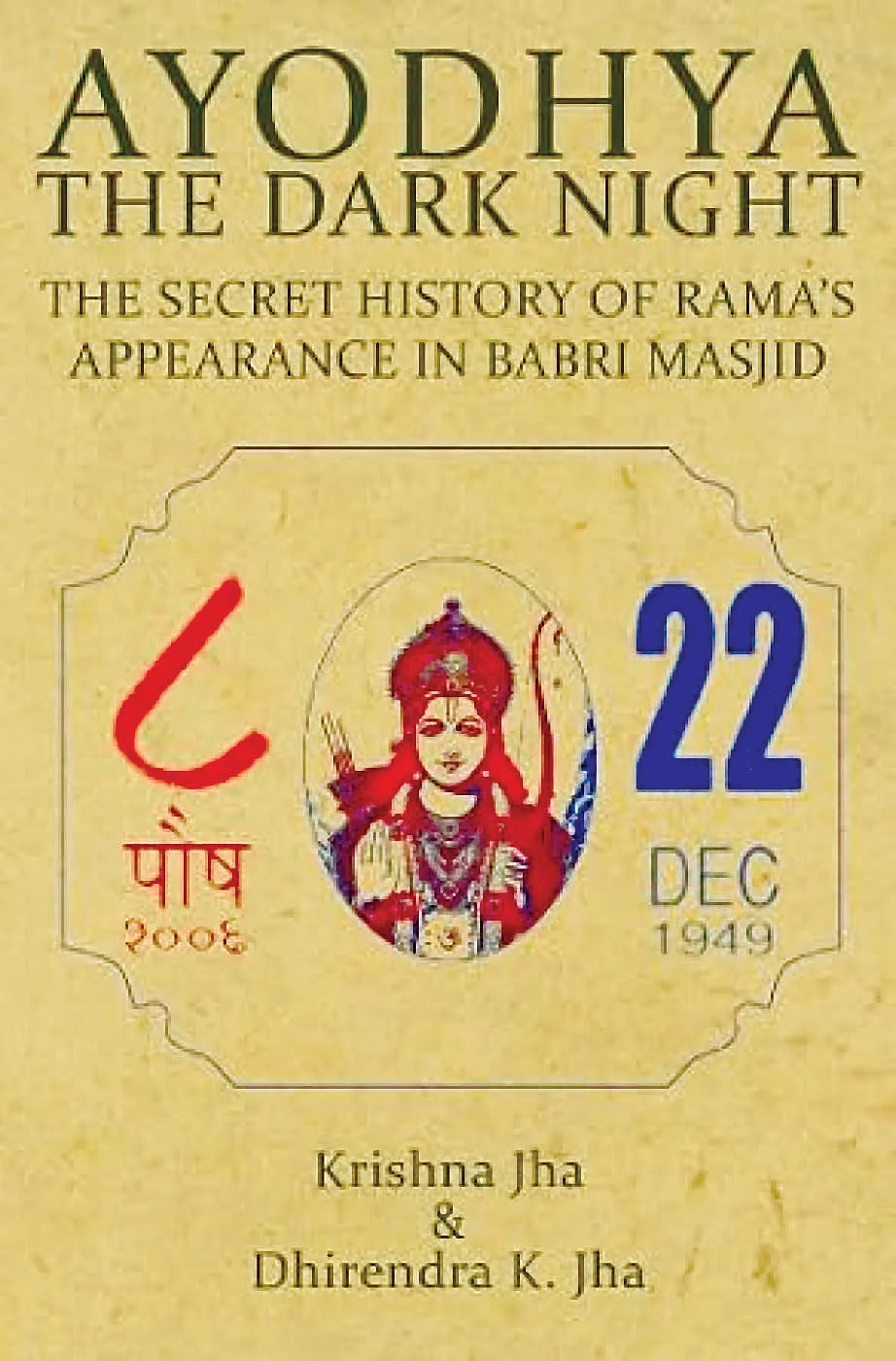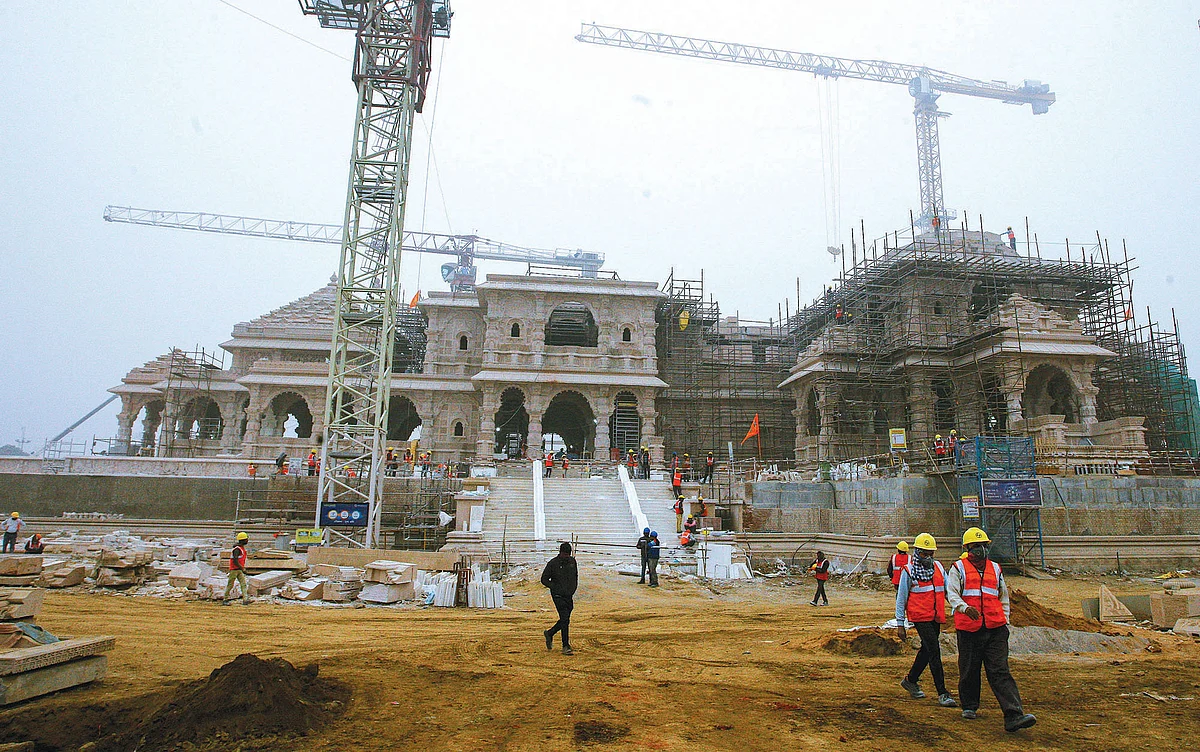Ayodhya—The Dark Night: The Secret History of Rama's Appearance in Babri Masjid
A chilling account of the night of 22 December 1949, when the myth of Ram Janmabhoomi was born

The night was almost over. Ayodhya was still numb with sleep. Piercing through the quiet, a young sadhu, drenched in sweat, came scampering from Hanumangarhi, a fortress-like Hindu religious establishment housing over 500 sadhus in Ayodhya.
He had been sent to summon Satyendra Das to his guru, Abhiram Das, who seemed to be breathing his last. Those were the early hours of 3 December 1981, and a curtain was coming down over a few forgotten pages of history.
Dharam Das, the other disciple who stayed with Abhiram Das in his one-room tenement, the asan in Hanumangarhi, had asked for him so that they could be with their guru in his last moments. The news did not come as a shock. Satyendra Das had been almost awaiting the moment, since he had known for long that his guru was nearing the end of his journey.
He had been at his bedside the whole day and the signs were not encouraging. Even when he had left Abhiram Das’s asan to get a breather after hours of tending to the terminally ill, he had a premonition that his guru—the man who had led a small band of Hindus to surreptitiously plant the idol of Lord Ram in Babri Masjid on yet another December night three decades ago—might not live long.
Their objective this time too was to wrest the political centrestage from the Congress by provoking large-scale Hindu mobilisation in the name of Lord Ram
After he had come away from the bedside, unwilling but tired to the bone, Satyendra Das was restless and unable to sleep. He dreaded the moment, yet knew that someone would knock on his doors with the news any time, and when it came, he responded fast, wrapped a quilt around himself and ran out along with the young sadhu who had come to fetch him.
[…]
The rituals for the final journey of ascetics are not the same as those for non-ascetic Hindu grihasthas, particularly in north India. Sadhus, unlike Hindu grihasthas, are rarely cremated.
There are two options: either their bodies are smeared with salt and buried sitting in a meditative posture, or they are dropped down a sacred river tied with a rock or sacks full of sand.
The fact that sadhus who take vows of complete renunciation are not cremated symbolises their separation from the material world. The claim goes that cremation for sadhus is superfluous since they have already burnt their attachments through ascetic initiation, opting for a life of austerities and renunciation.
In Ayodhya, the normal ascetic practice [is] to immerse the body of a sadhu in the Sarayu—the name given to the river only as [far] as it touches the shores of the town. Before and after Ayodhya, the river is known as the Ghaghara.
The reason for this nomenclatural confusion lies in a particular Hindu belief. As mythology has turned Ayodhya into the birthplace of Lord Ram, the river flowing by it has also assumed the mythical name of Sarayu—the stream that is believed to have flowed through the kingdom of Lord Ram.
[…]
Outside the asan, the body of Abhiram Das had been placed on a platform made of bamboo in a seated posture, his face frozen into a mask of self-control, his eyes half-closed as if he were deep in meditation. A saffron piece of cloth that had the name of Lord Ram printed all over—a particular kind of cotton or silk material called Ramnami—had been carefully wrapped around the body.
A similar cloth covered three sides of the arch made out of split bamboo that rested on the hard bamboo platform holding the corpse. The bamboo structure—euphemistically called vimaan to symbolise the mythical transporter of souls to the heavenly realm—had been kept uncovered on one side to enable people to have a last glimpse of the deceased.
Slowly, a group of sadhus lifted the vimaan on their shoulders and climbed up the flight of stairs leading to the temple of Lord Hanuman in the centre of Hanumangarhi. At the temple, the group swelled further and as the vimaan was taken out of Hanumangarhi, the motley crowd accompanying it chanted, “Ram janmabhoomi uddharak amar rahen (Long live the saviour of the birthplace of Ram).”

Three decades back, on the morning of 23 December 1949, the First Information Report (FIR) registered by Ayodhya police following the planting of the idol of Lord Ram in Babri Masjid on the night before had named Abhiram Das as the prime accused.
He had also been tried for the crime he and his friends had committed that night, but the case had remained inconclusive.
In the course of time, many Hindus in Ayodhya had started calling him 'Ram janmabhoomi uddharak'.
The slogan-shouting grew louder as the vimaan reached the entrance of Babri Masjid, where it was carefully laid down.
The priests of Ram Janmabhoomi, the temple that operated inside Babri Masjid ever since the idol was planted in it, as well as those of nearby Hindu religious establishments, already knew about the demise of the sadhu. They came out and garlanded the corpse and paid their homage to the departed soul.
By and large, however, Ayodhya remained unaware of Abhiram Das’s death. Though some residents looked at this funeral procession with curiosity, for the majority it was the demise of yet another old sadhu.
After three decades, the historical facts associated with the developments in 1949 had slipped into obscurity.
The propaganda of the All India Hindu Mahasabha and Rashtriya Swayamsevak Sangh (RSS)—that the idol had never been planted and Lord Ram had manifested himself at his place of birth—had gained ground among devout Hindus by now, largely delinking Abhiram Das from what he had done in the dark hours of that fateful night.
Booklets and pamphlets written by Hindu communalists during the intervening period had flooded the shops of Ayodhya and had gone a long way in reinforcing the myth of ‘divine exercise’.
For legal reasons, even those who had a role in that surreptitious act found it convenient to let the myth grow and capture the popular imagination. The law, after all, could catch human conspiracies, but a ‘divine exercise’ was beyond its reach. Yet, to a small group of Hindus in Ayodhya, Abhiram Das continued to remain till his death Ram janmabhoomi uddharak or simply Uddharak Baba.
[…]
The indifferent response that Abhiram Das’s death evoked among the local populace in 1981 was at odds with the atmosphere the town had witnessed three decades ago, during the years following Independence.
At that time, many in Ayodhya, as in several other parts of the country, had seen things differently. The communal frenzy that had accompanied the Partition of India had intensely brutalised the atmosphere.
No less important was the role played by organisations which saw the immediate aftermath of Partition as an opportunity to derail the secular project of independent India.
The conspirators associated with these organisations and the conspiracies they hatched had already resulted in major national tragedies. One such was the gruesome murder of Mahatma Gandhi on 30 January 1948.
The hands that pumped bullets into the chest of the Mahatma were that of Nathuram Godse, but, as was proved later, the assassination was part of a conspiracy hatched by top Hindu Mahasabha leaders, led by V.D. Savarkar, whose prime objectives were to snatch political initiative from the Congress and destabilise all efforts to uphold secularism in India.
The conspiracy to kill Gandhi could not remain hidden for long, even though the trial, held immediately after the assassination, had failed to uncover its extent.
The surreptitious occupation of the Babri Masjid was an act planned by almost the same set of people about two years later—on the night of 22 December 1949.
It was, in many ways, a reflection of the same brutalised atmosphere that saw Gandhi being murdered. Neither the conspirators nor their underlying objectives were different.
In both instances, the conspirators belonged to the Hindu Mahasabha leadership—some of the prime movers of the planting of the idol had been the prime accused in the Gandhi murder case—and their objective this time too was to wrest the political centrestage from the Congress by provoking large-scale Hindu mobilisation in the name of Lord Ram.

The text above is extracted from:
Title Ayodhya: The Dark Night
Author Krishna Jha & Dhirendra Jha
Publisher HarperCollins
Follow us on: Facebook, Twitter, Google News, Instagram
Join our official telegram channel (@nationalherald) and stay updated with the latest headlines
- Ayodhya
- Babri Masjid
- Ram Mandir
- Ram Janmabhoomi movement
- Ram Temple in Ayodhya
- Ram Mandir-Babri Masjid dispute